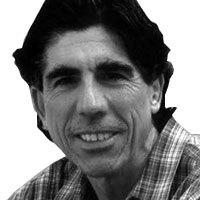Fifty years ago on May 29, 1964, Jackie Kennedy, accompanied by her two children, returned to Arlington National Cemetery. There she placed a sprig of lilies of the valley on President Kennedy’s grave.

The occasion was JFK’s 47th birthday, and Mrs. Kennedy’s homage seemed only natural. But today it is possible to see more than a tribute to her husband in Mrs. Kennedy’s actions. It is also possible to see her deciding the time had come for her and the nation to end their period of mourning.
The day, which was intensely covered by the media, began with Mrs. Kennedy attending mass at St. Matthew’s Roman Catholic Cathedral in Washington, where Bishop Phillip M. Hannan, who had eulogized the president following his assassination, gave the requiem sermon. Mrs. Kennedy, who had been so stoic at her husband’s burial six months earlier, wore no veil on this occasion and allowed herself to be seen crying openly.
ADVERTISEMENT
A crowd of 1,000 people was waiting on the hillside across the Potomac when Mrs. Kennedy visited President Kennedy’s gravesite after the service, but it was as if Mrs. Kennedy looked on this spring day as one in which she was free to express her full range of feelings without worrying about being judged.
She knelt by the president’s grave, then watched as her son took the gold tie clasp in the form of his father’s World War II boat, PT-109, that he had on his coat, and placed it on the pine boughs covering the grave.
By 4:30 p.m, Mrs. Kennedy was at the Hyannis Port, Massachusetts, home of her father-in-law, Joseph P. Kennedy, for an international telecast on President Kennedy’s life, but the most revealing indication of the specialness the day held for her came in the interview she did for the May 29 Life magazine.
On December 6 Mrs. Kennedy had been the subject of a Life cover story. In a widely remembered interview with journalist Theodore White, she had made a point of comparing the Kennedy administration to King Arthur’s legendary Camelot. Referencing the popular Lerner and Loewe Broadway musical Camelot, she had told White that the specialness her husband and his administration had achieved was too unique to be duplicated.
“She came back to the idea that transfixed her,” White wrote. “Don’t let it be forgot, that was there was a spot, for one brief shining moment that was known as Camelot—and it will never be that way again,” White quoted Mrs. Kennedy as saying.
In her Life interview of May 29, Mrs. Kennedy was still elegiac about her husband, but this time she was not preoccupied with the idea of the Kennedy administration as mythic. She spoke instead about preparing an exhibit of the president’s mementos that would tour the country and be used to raise funds for the Kennedy Library.
The point of the library, she stressed, was to let the president’s example be a guide to the future, not just evoke nostalgia for the past. The ’60s, Mrs. Kennedy was implicitly saying, needed a fresh start, and she was not going to stand in the way of that fresh start or turn herself into a professional widow.
Two months later, Mrs. Kennedy announced that she was giving up her home in Georgetown and moving to New York. The move freed her from the crowds that gathered daily in Georgetown to watch her comings and goings, but above all, the move let her start a new life on terms of her choosing.
In New York, Mrs. Kennedy became a leading figure in the city’s cultural life. The preservation of St. Bartholomew’s Church on Park Avenue and, most important, the preservation of Grand Central Station, which for a time during the ’70s lost its landmark designation, were among her triumphs.
“Jackie Onassis will save us,” the famed modern architect Philip Johnson commented when she took the lead in the fight to stop a proposed 59-story office tower from being erected over Grand Central Station. Johnson’s praise, made in 1975, captures how dramatically Mrs. Kennedy altered the public’s view of her and how easy it is to forget, living as we do in the age of Hillary Clinton and Michelle Obama, that, prior to the ’60s, presidential wives were seen but rarely heard, especially after their husbands left office.
In deciding what to do after she moved away from Washington, Mrs. Kennedy had before her only the modern example of Eleanor Roosevelt, who, following her husband’s death, took an active role in the United Nations and continued writing her newspaper column. But Mrs. Roosevelt was in her sixties when her husband died after 12 years in office. In 1964 Jackie Kennedy was just 35, the widow of a first-term president, when she began setting historical precedents of her own.
Nicolaus Mills is professor of American Studies at Sarah Lawrence College and author of Winning the Peace: The Marshall Plan and America’s Coming of Age as a Superpower.
Photos: John F. Kennedy’s Personal Photographer Looks Back on the Kennedy Years







